Choose your municipality
There are several municipalities connected with The Green Menu, check whether your municipality is participating or choose for the national page.
Choose you menu card
There are several different menu cards. Choose a buildingtype down below and instantly start with the sustainable options!

Most companies and homes heat with gas. This is a fossil fuel and emits CO2. Saving energy to heat rooms and water can therefore be very beneficial for the environment. It can also be great for your wallet. Gas costs usually account for about 2/3 of the total energy bill. In addition, the energy tax for gas will increase, while for electricity, it will decrease. So it's smart to look for alternatives to the gas-fired central heating boiler.
A solar thermal roof is actually a combination of solar panels and a solar boiler. This PVT roof produces hot water and electricity from solar energy. Panels on the roof convert sunlight into electricity and ensure that solar heat is exchanged with water in the storage tank inside. The heated water can be used for tap water and for heating your building with the help of a heat pump.
A solar thermal roof is actually a combination of solar panels and a solar boiler. This PVT roof produces hot water and electricity from solar energy. Panels on the roof convert sunlight into electricity and ensure that solar heat is exchanged with water in the storage tank inside. The heated water can be used for tap water and for heating your building with the help of a heat pump.

An (electric) air heat pump extracts energy from the outside air which can be used for heating tap water and for space heating. Electricity is used instead of gas. It is possible to go all-electric or install a hybrid system. In a all-electric system, the heat pump, in combination with a buffer tank, generates all the necessary heat for both heating and domestic hot tap water. You can also opt for a hybrid heat pump, whereby the heat pump only generates heat if it is above 4˚C outside. The all-electric heat pump only works in combination with a low-temperature delivery system, such as underfloor heating. It is important that your building is well insulated before you consider switching to low-temperature heating and a heat pump.
The air heat pump has an outside element and a smaller interior element. The outside element can be placed at various locations outside the building, taking into account possible noise production (not near windows) and whether the outside element is visible from the public space. The interior element is placed next to the boiler together with the buffer tank.
With a water-saving shower head that creates a mist, you save more than 50% on water consumption.
An (electric) air heat pump extracts energy from the outside air which can be used for heating tap water and for space heating. Electricity is used instead of gas. It is possible to go all-electric or install a hybrid system. In a all-electric system, the heat pump, in combination with a buffer tank, generates all the necessary heat for both heating and domestic hot tap water. You can also opt for a hybrid heat pump, whereby the heat pump only generates heat if it is above 4˚C outside. The all-electric heat pump only works in combination with a low-temperature delivery system, such as underfloor heating. It is important that your building is well insulated before you consider switching to low-temperature heating and a heat pump.
The air heat pump has an outside element and a smaller interior element. The outside element can be placed at various locations outside the building, taking into account possible noise production (not near windows) and whether the outside element is visible from the public space. The interior element is placed next to the boiler together with the buffer tank.

“Onze koeling was toe aan vervanging. In plaats van 1-op-1 vervangen, hebben we gekeken naar een duurzaam alternatief. Zo kwamen we uit op een warmtepomp. Door de warmtepompen op de cv-ketels aan te sluiten kunnen we ons gasgebruik zo ongelofelijk terugdringen!”

Veel grotere panden hebben koelinstallaties voor de conditionering van het binnenklimaat. Deze koelinstallaties kunnen veel energie vragen. Daarnaast worden oude apparaten met bepaalde koelmiddelen (bijvoorbeeld R22) uitgefaseerd. Zoals bij meerdere thema's is beperken van de energievraag een eerste stap. Verlaag de koelvraag zoveel mogelijk door toepassen van isolatie, zonwerende maatregelen en vermijden van interne warmtebronnen. Verbeter bestaande installaties door te koelen met zo hoog mogelijke temperaturen en gebruik van goede regelingen op de installatie. Bij koelinstallaties komt veel warmte vrij. Probeer dit zoveel mogelijk nuttig toe te passen. Een koelmachine is ook toe te passen als warmtepomp, waarbij deze kan verwarmen óf koelen (tweepijps) of gelijktijdig verwarmen én koelen (drie- of vierpijps).
Veel grotere panden hebben koelinstallaties voor de conditionering van het binnenklimaat. Deze koelinstallaties kunnen veel energie vragen. Daarnaast worden oude apparaten met bepaalde koelmiddelen (bijvoorbeeld R22) uitgefaseerd. Zoals bij meerdere thema's is beperken van de energievraag een eerste stap. Verlaag de koelvraag zoveel mogelijk door toepassen van isolatie, zonwerende maatregelen en vermijden van interne warmtebronnen. Verbeter bestaande installaties door te koelen met zo hoog mogelijke temperaturen en gebruik van goede regelingen op de installatie. Bij koelinstallaties komt veel warmte vrij. Probeer dit zoveel mogelijk nuttig toe te passen. Een koelmachine is ook toe te passen als warmtepomp, waarbij deze kan verwarmen óf koelen (tweepijps) of gelijktijdig verwarmen én koelen (drie- of vierpijps).
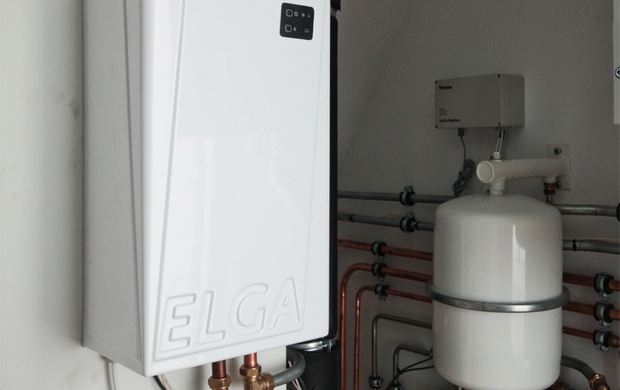
If the heat demand is so high that it is not possible to heat with just a heat pump, a hybrid heat pump offers the solution. If it is really cold outside, below 5 degrees Celsius, it is difficult for the air heat pump to extract heat from the outside air. In the case of a hybrid heat pump, a gas-fired boiler will then switch on. Ask the installer whether your existing central heating system is suitable for this or opt for a new system with a heat pump and central heating boiler in one. The hybrid heat pump also uses a central heating system to heat tap water, so no buffer tank is required. It is also not necessary to switch to low-temperature heating, such as underfloor heating. Insulation and ventilation are required because otherwise, electricity consumption will become too high. For this reason, it is also interesting to explore whether you can combine the heat pump with solar panels. Most of the year, the heat pump will be in operation, which will save a lot of gas. And the costs of a hybrid heat pump are lower than those of other heat pump systems.
Keep in mind that air heat pumps have an external part. These must be carefully placed due to noise production, for example not near windows. It is possible to place a casing around the external part for noise insulation.
If the heat demand is so high that it is not possible to heat with just a heat pump, a hybrid heat pump offers the solution. If it is really cold outside, below 5 degrees Celsius, it is difficult for the air heat pump to extract heat from the outside air. In the case of a hybrid heat pump, a gas-fired boiler will then switch on. Ask the installer whether your existing central heating system is suitable for this or opt for a new system with a heat pump and central heating boiler in one. The hybrid heat pump also uses a central heating system to heat tap water, so no buffer tank is required. It is also not necessary to switch to low-temperature heating, such as underfloor heating. Insulation and ventilation are required because otherwise, electricity consumption will become too high. For this reason, it is also interesting to explore whether you can combine the heat pump with solar panels. Most of the year, the heat pump will be in operation, which will save a lot of gas. And the costs of a hybrid heat pump are lower than those of other heat pump systems.
Keep in mind that air heat pumps have an external part. These must be carefully placed due to noise production, for example not near windows. It is possible to place a casing around the external part for noise insulation.
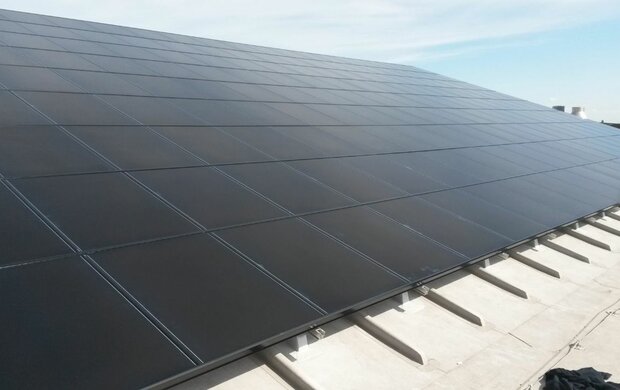
Heat pumps can extract heat from various sources. Well-known sources are air, soil and water. A less known source is solar heat. PVT (Photo-Voltaic-Thermal) panels or solar collectors can be used to extract solar heat and ambient heat. The absorbed heat is then increased by the heat pump for low-temperature heating. A solar heat pump is particularly suitable for buildings with a large roof surface area. A large absorption surface area is required to extract enough heat even on cloudy days. Cooling is only possible at night with this system.
Heat pumps can extract heat from various sources. Well-known sources are air, soil and water. A less known source is solar heat. PVT (Photo-Voltaic-Thermal) panels or solar collectors can be used to extract solar heat and ambient heat. The absorbed heat is then increased by the heat pump for low-temperature heating. A solar heat pump is particularly suitable for buildings with a large roof surface area. A large absorption surface area is required to extract enough heat even on cloudy days. Cooling is only possible at night with this system.
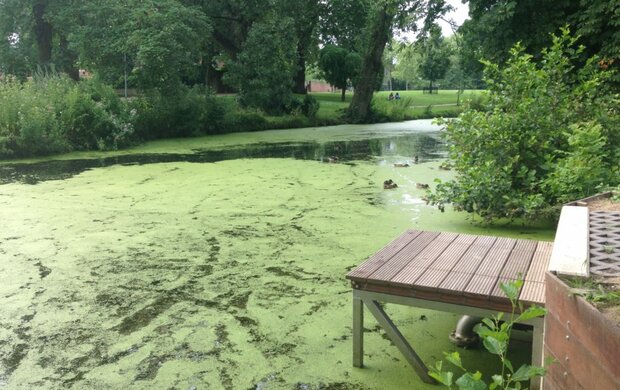
Water in the surrounding area can be used to heat your building, such as a nearby lake, pond or moat. Heat is extracted from surface water in the summer. A heat pump increases the temperature, making it suitable for low-temperature heating. The investment is high compared to an air heat pump. This heating system is particularly suitable for buildings where the heat demand is high and people also want to cool. In combination with a thermal energy storage system, heat can be stored and the temperature in the water remains balanced. The construction of the water source is subject to permit requirements and life in the water must not be disturbed.
Water in the surrounding area can be used to heat your building, such as a nearby lake, pond or moat. Heat is extracted from surface water in the summer. A heat pump increases the temperature, making it suitable for low-temperature heating. The investment is high compared to an air heat pump. This heating system is particularly suitable for buildings where the heat demand is high and people also want to cool. In combination with a thermal energy storage system, heat can be stored and the temperature in the water remains balanced. The construction of the water source is subject to permit requirements and life in the water must not be disturbed.
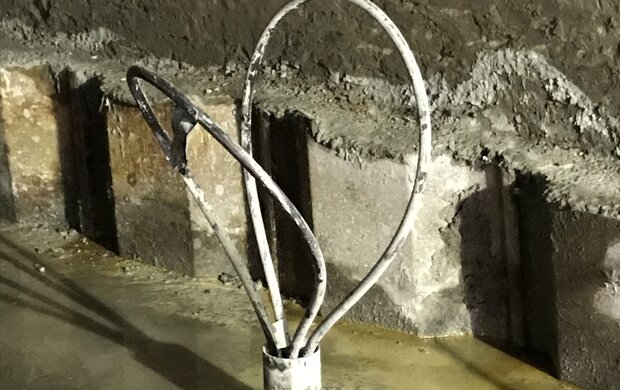
A ground source heat pump uses thermal energy from the ground. At 55 to 100 metres below ground level, the constant ground temperature of 12 °C is extracted with a heat exchanger. A heat pump increases this thermal energy to a suitable temperature for low-temperature heating, maximum 55 degrees. A ground source is most suitable if you also use it to cool the building, for the purpose of regenerating the ground source over summer. This heat pump requires good building insulation, ventilation and possibly a new form of heating in your building, such as underfloor heating. The investment is higher than with an air source heat pump, especially because of the construction of the ground source. Keep in mind that you need a permit for this and that the garden must be accessible. With monuments, this can often be challenging.
Is your foundation in need of replacement? It is possible to use a foundation pile as a vertical ground exchanger. To convert the ground energy into heat, a heat pump is then connected. This eliminates the need to build a separate ground source, thus saving you considerable investment costs.
Did you know that there are different types of ground sources? Closed and open sources. Make sure you are properly informed. Closed sources are possible horizontally, vertically and in surface water. Open sources are available in mono, recirculation and doublet versions. The latter is also called thermal energy storage.
A ground source heat pump uses thermal energy from the ground. At 55 to 100 metres below ground level, the constant ground temperature of 12 °C is extracted with a heat exchanger. A heat pump increases this thermal energy to a suitable temperature for low-temperature heating, maximum 55 degrees. A ground source is most suitable if you also use it to cool the building, for the purpose of regenerating the ground source over summer. This heat pump requires good building insulation, ventilation and possibly a new form of heating in your building, such as underfloor heating. The investment is higher than with an air source heat pump, especially because of the construction of the ground source. Keep in mind that you need a permit for this and that the garden must be accessible. With monuments, this can often be challenging.
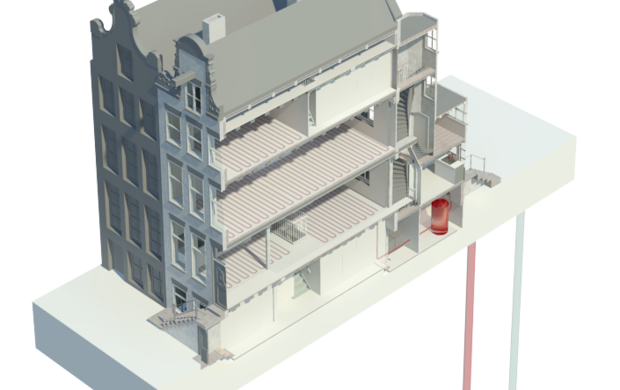
A ground-coupled heat exchanger is basically a storage for heat (or cold) deep in the ground. The system lies between 55 and 100 metres below ground level, and uses the constant ground temperature of 12 degrees Celsius. In summer, this temperature can be used to cool. In winter, 12 degrees Celsius is relatively warm and can therefore heat the water. A heat pump increases the temperature to make it suitable for low-temperature heating. A ground-coupled heat exchanger system is particularly suitable for heating at a district level or for large buildings. In other situations, such as for a residential home, an ordinary heat pump with a ground source is more suitable.
A ground-coupled heat exchanger is basically a storage for heat (or cold) deep in the ground. The system lies between 55 and 100 metres below ground level, and uses the constant ground temperature of 12 degrees Celsius. In summer, this temperature can be used to cool. In winter, 12 degrees Celsius is relatively warm and can therefore heat the water. A heat pump increases the temperature to make it suitable for low-temperature heating. A ground-coupled heat exchanger system is particularly suitable for heating at a district level or for large buildings. In other situations, such as for a residential home, an ordinary heat pump with a ground source is more suitable.

"We hebben bij de vernieuwing van ons theater een warmtepomp met een warmte-koudeopslag (WKO) toegevoegd en de installatie aangesloten op ons museum. Het museum dat in principe gekoeld moet worden en het theater dat verwarmd moet worden, wisselen dankzij de warmte-koudeopslag daar slim in uit.”
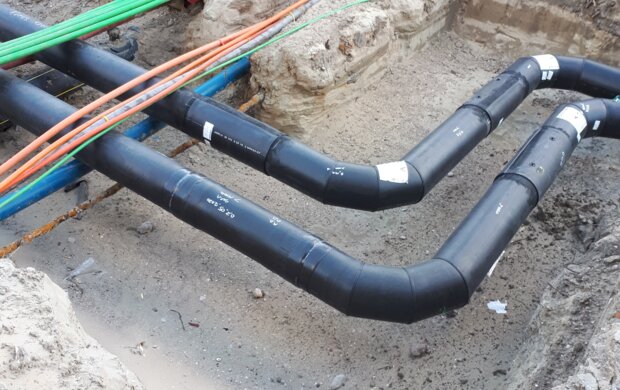
The heat released by waste and power plants can be used in some areas to heat residential areas and industrial estates. The residual heat from large power plants is collected in large vessels of water and channelled into the city via an underground pipe system. Buildings connected to district heating can use this heat for heating and hot tap water. Heat grids can operate at both high and low temperatures, in which case good building insulation and low-temperature heating, such as underfloor heating, are important.
The heat released by waste and power plants can be used in some areas to heat residential areas and industrial estates. The residual heat from large power plants is collected in large vessels of water and channelled into the city via an underground pipe system. Buildings connected to district heating can use this heat for heating and hot tap water. Heat grids can operate at both high and low temperatures, in which case good building insulation and low-temperature heating, such as underfloor heating, are important.
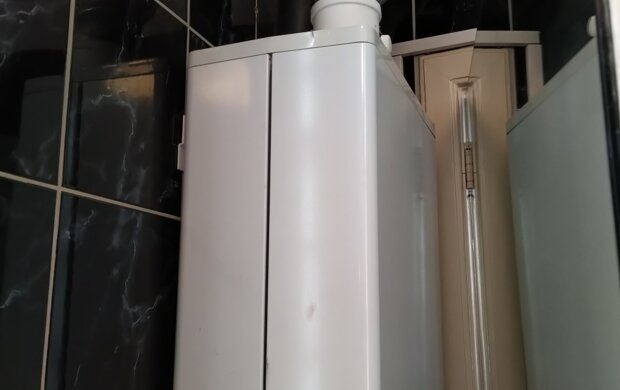
Most people opt for a Condensing boiler when their old central heating boiler needs replacing. On average, a boiler will last fifteen years, during which time boilers will have become more energy efficient. Modern condensing boilers use condensation heat and can therefore achieve a high efficiency. In addition, modern boilers can modulate and are better adjustable, so that they do not run at full speed with a small heat demand. With a new boiler, you can save up to 20% on the gas bill, which means you earn back your investment within a few years.
Most people opt for a Condensing boiler when their old central heating boiler needs replacing. On average, a boiler will last fifteen years, during which time boilers will have become more energy efficient. Modern condensing boilers use condensation heat and can therefore achieve a high efficiency. In addition, modern boilers can modulate and are better adjustable, so that they do not run at full speed with a small heat demand. With a new boiler, you can save up to 20% on the gas bill, which means you earn back your investment within a few years.
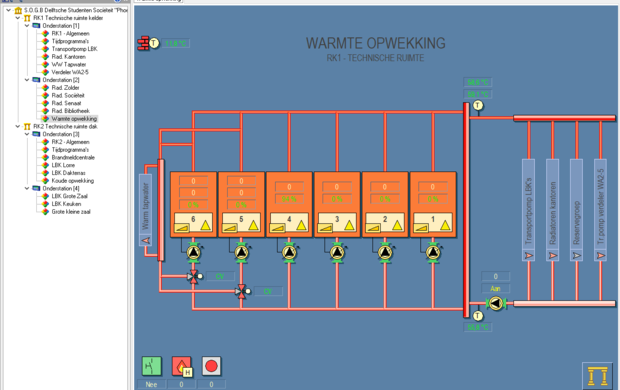
Een gebouwbeheersysteem wordt steeds vaker ingezet om de installaties optimaal te kunnen gebruiken, centraal aan te sturen en goed aan te laten sluiten op de energievraag en het energieverbruik in een grotere panden. Naast een goede zonering in het pand, is het interessant om een monitoringsysteem aan te leggen. Dit biedt beter inzicht in het energiegebruik en stimuleert de gebruiker om bewuster energie te gebruiken.
Een gebouwbeheersysteem wordt steeds vaker ingezet om de installaties optimaal te kunnen gebruiken, centraal aan te sturen en goed aan te laten sluiten op de energievraag en het energieverbruik in een grotere panden. Naast een goede zonering in het pand, is het interessant om een monitoringsysteem aan te leggen. Dit biedt beter inzicht in het energiegebruik en stimuleert de gebruiker om bewuster energie te gebruiken.
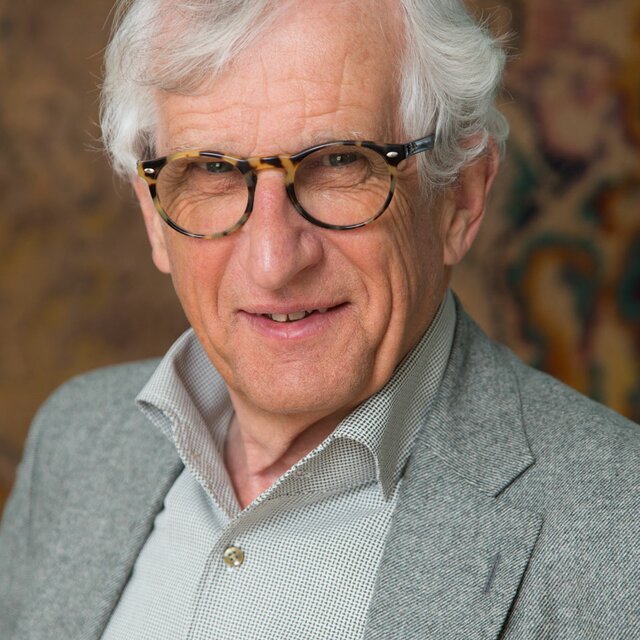
"Installaties zoals verwarming, ventilatie en luchtbehandeling worden met de gebouwbeheersysteem centraal aangestuurd. Hiermee kunnen wij een zo optimaal mogelijk binnenklimaat realiseren en daarnaast zorgen voor een goede afstemming van de energievraag en het energieverbruik.”
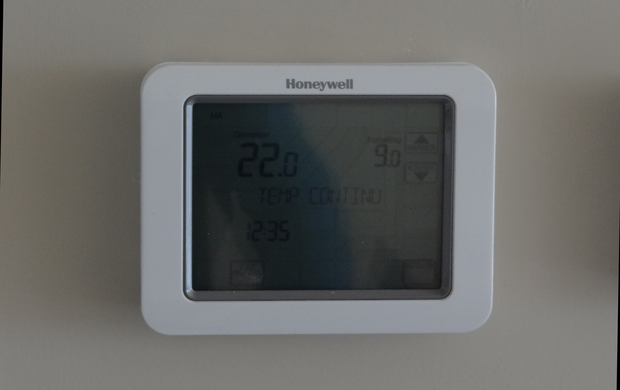
A smart thermostat can help you to heat your building in a more energy-efficient way. Depending on the type of thermostat, the smart thermostat automatically adapts to your living rhythm and wishes. Choose a thermostat that suits you best. This way, you can control the heating remotely or the thermostat is self-learning. Some thermostats can even show you the energy consumption, just like an energy consumption manager. Or they read the meter readings of the smart meter automatically. This way, a smart thermostat helps you heat more efficiently.
A smart thermostat can help you to heat your building in a more energy-efficient way. Depending on the type of thermostat, the smart thermostat automatically adapts to your living rhythm and wishes. Choose a thermostat that suits you best. This way, you can control the heating remotely or the thermostat is self-learning. Some thermostats can even show you the energy consumption, just like an energy consumption manager. Or they read the meter readings of the smart meter automatically. This way, a smart thermostat helps you heat more efficiently.
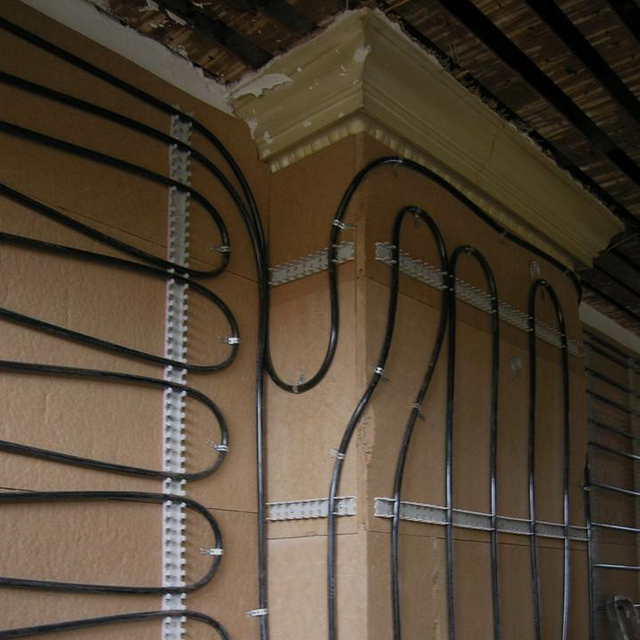
A technique that has been used since 2011 for energy savings in heating is the active insulation of exterior facades. This involves pumping heat from the ground of approx. 10-12˚C to heat the exterior walls. This heat is further heated to 20˚C in winter by a heat pump. The existing heating can be retained. In summer, the 10-12˚C water is used for cooling. The system can be applied to the exterior or interior facade with prefabricated elements, in which the piping is pre-installed.